Scuba diver has close-up experience with beautiful stingray
Stingrays are a very misunderstood and greatly feared animal. They have a deadly barb that carries a toxic venom. They are very capable of defending themselves against threats, but they are almost harmless to humans. They eat crustaceans, shellfish, and occasional squid and they have absolutely no reason to attack a human, unless they perceive that they are being attacked themselves.
On rare occasions, swimmers can mistakenly step on a stingray and their natural reaction is to arch their tail up, exposing the barbs that have evolved to protect them from sharks attacking from above. The barb leaves a vicious wound and injects poison that will cause extremely serious and painful injuries, but the sting is rarely fatal.
Despite the very low incidence of injuries to people, the stingray has an undeserved reputation for being a vicious and fearsome killer. This was made worse by sensationalized coverage of the death of the beloved showman and conservation advocate, The Crocodile Hunter. He was jabbed in the chest and his heart was pierced by the tail barb of a stingray. This was not an intentional attack, and the likelihood of someone receiving a similar wound is very low, unless a person unwisely tried to handle a wild stingray.
This is a southern stingray in the Cayman Islands. Normally shy and reclusive, most stingrays will avoid close contact with humans and they are capable of rapid retreat when they perceive danger. But, as with most animals, a slow and respectful approach can sometimes reward a scuba diver with the opportunity to observe a stingray close up.
Taking several minutes to let the animal get comfortable, Serena approached the stingray from the side, keeping herself low so she would not appear as a threat from above. She kept her hands tucked in and even controlled her breathing so that she made no sudden exhalation of air. This is a loud sound underwater and can be a signal to an ocean creature that an attack is about to begin. Serena followed this stingray and watched as it cruised over the sand, using thousands of electrical sensors in its wings to detect the tiny, buried creatures that it eats. They are a wonder of nature and a joy to watch as they gracefully glide along the bottom of the ocean.
As with all animals, approaches should be made carefully. If the animal shows any sign of stress, the distance should be increased.
-
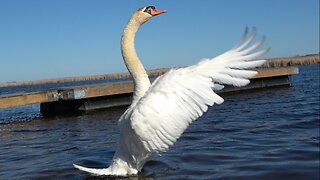 1:19
1:19
WildCreatures
11 days ago $1.97 earnedMajestic swan shows off his gorgeous plumage
3.47K3 -
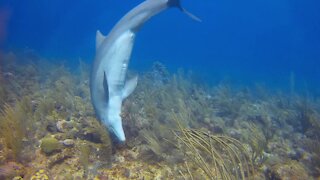 0:49
0:49
BigSexysPlayground
3 years ago $1.48 earnedPlayful dolphin has a beautiful interaction with this scuba diver
3.89K2 -
 0:32
0:32
BigSexysPlayground
2 years ago $1.13 earnedSpotted eagle stingrays come to closely examine scuba diver
4.03K17 -
 0:53
0:53
BigSexysPlayground
3 years ago $4.47 earnedGigantic stingray cruises casually past unsuspecting scuba diver
4K7 -
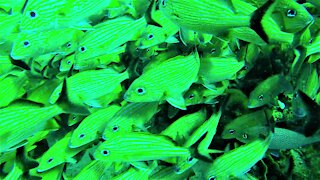 0:34
0:34
BigSexysPlayground
3 years ago $1.11 earnedScuba diver swims through a school of beautiful tropical fish
1.46K3 -
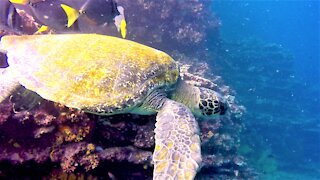 0:28
0:28
WildCreatures
3 years ago $10.01 earnedScuba diver comes face to face with gigantic sea turtle
4.4K15 -
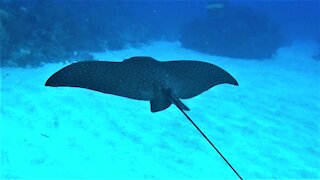 0:32
0:32
BigSexysPlayground
3 years ago $4.07 earnedScuba diver meets gigantic spotted eagle stingray in Belize
3.97K -
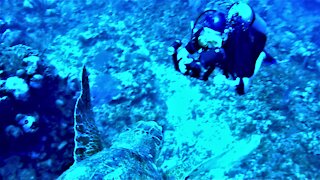 0:54
0:54
WildCreatures
3 years ago $2.18 earnedGigantic sea turtle swims straight into scuba diver
5.39K20 -
 0:33
0:33
BigSexysPlayground
4 years ago $1.67 earnedScuba diver has extremely close look at large stingray
1.74K -
 0:26
0:26
BigSexysPlayground
3 years ago $0.37 earnedScuba diver swims through beautiful school of fish in Belize
1.47K